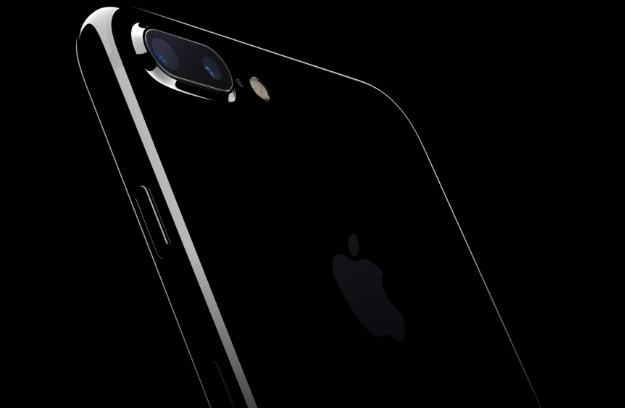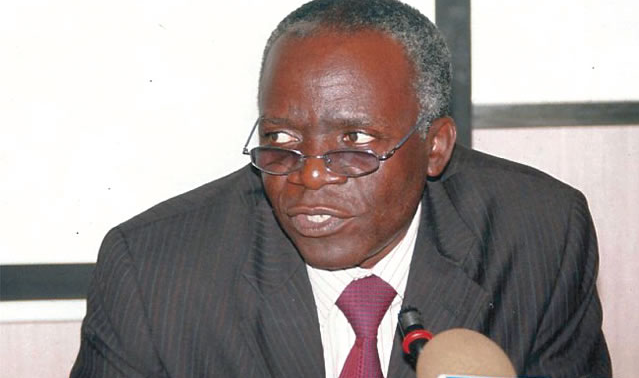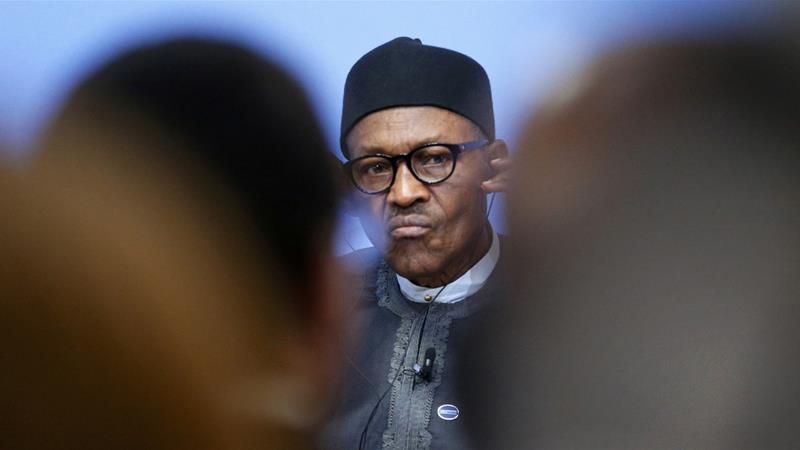I am gratified by the honour of being chosen to give a keynote address at this year’s annual lecture of the Mass Communication Students Association, University of Lagos. The history and products of this department have consistently projected it as a leading centre for communication studies in Nigeria with an uncommon commitment to community service.
That promise to community service is demonstrated,in truth and indeed, by our gathering here today to reflect on how we can reshape our ever lively, often heated national narratives and discourse. Given the contemporary realities of our country, majority of us here will agree the timing is auspicious for us to discuss how we can foster national cohesion using the force of logic, rather than the logic of force.
The guest lecturer, I am convinced, is sufficiently armed with the tools of dialectics to enrich our understanding in this regard as we listen to his brilliant presentation. The thematic focus of the main lecture is: Imagery – A Mechanism in Building Brand Acceptability and National Cohesion. However, just before he comes up to deliver the paper, I have a duty to speak briefly and through that process nudge us to reflecton how we might explore the potential of imageries to build brands, especially our national brand to foster national cohesion especially in the age of communication technology.
Let us start the brass tacks by undertaking a quick clarification of the main concept. Imagery finds expression in the use of pictures and ideas to represent and communicate thought. As a generic word, it incorporates metaphors, personification, allegory, symbols, similes and other figures of speech and arts rooted in cultural practices. In fact, the Encarta Dictionaries defines imagery as figurative language, especially metaphors and similes used in poetry, plays and other literary works such as photographic images and art works, or mental pictures that scholars make use of to depict characters sometimes through descriptions, comparisons or juxtapositions,to make us understand their works, and the world around us.
Advertisement
Imageries abound in many forms in practically all literary works, not only as figures of speech but also in folktales and many cultural forms. The works of two of Nigeria’s leading lights of the literary world will suffice to buttress this. First is Chinua Achebe’sThings Fall Apart which has been translated into tens of languages.
In Things Fall Apart, folktales – especially those featuring animals – are seen as a symbol of femininity, especially to Okonkwo, Achebe’s key character. In the novel, mothers and daughters have a tendency to share folktales, but folktales are also Nwoye, Okonkwo’s son’s favorite forms of entertainment. This makes Okonkwo fear that his son is too effeminate http://www.shmoop.com/things-fall-apart/folktales-symbol.html.
Also in the novel, Achebe depicts yamas a crop grown exclusively by men. “Growing yams is labour intensive, and the size of a man’s fields and harvest say much about his work ethics. Yams are grown to gain wealth and also to feed one’s family”, so here we see imagery or symbol of masculinity and ability as a provider http://www.shmoop.com/things-fall-apart/yams-symbol.html.
Advertisement
You will also recall that egwugwu are a symbol of the culture and independence of Umuofia. The egwugwu are seen as ancestral gods, though in actuality they are masked Umuofia elders. The egwugwu serve as respected judges in the community, listening to complaints and prescribing punishments and deciding conflicts. Symbolically, they are the spirit of the clan. So, when the egwugwu lose power in the community and are replaced by a white court, the clan’s culture and independence is losthttp://www.shmoop.com/things-fall-apart/egwugwu-symbol.html.
The second reference of the use of imagery by writers can be gleaned from some works of Wole Soyinka, Africa’s first Nobel Laureate in Literature. In the poem Telephone Conversation, I am sure we can recall the phrase “… Silenced transmission of Pressurized good-breeding”(I. 7). The metaphor of the “pressurized good-breeding” is an imagery suggesting the fact that the woman initially came across as educated and elegant, however, her mask soon disappeared under pressure, when she revealed her racist attitude.
Similarly, the metaphor “stench of rancid breath” (ll. 11-12) also suggests the fact that the woman wears a fetid mask behind (Http//:www.studienet.dk/engelsk/analyse/telephone-conversation/by-wole-soyinka/imagery-and-metaphors).
Finally, in Death and the King’s Horseman, Soyinka uses imagery through his characters Iyaloja and Elesin when the former visits Elesin in prison. Iyaloja uses this turn of phrase yet again to drive home the awfulness of what Elesin’s done: “You have betrayed us. We fed you sweetmeats such as we hoped awaited you on the other side. But you said No, I must eat the world’s left-overs […] No, I am content to lick the dregs from each calabash when the drinkers are done” (5.78). In other words, Elesin gave up the massive rewards awaiting him on other side to stick around the earthly world—which, in the end, is kind of the ultimate leftover, in the view of his people (http://www.shmoop.com/death-and-the-kings-horseman/leftovers-symbol.html).
Advertisement
The foregoing demonstrates the value of imagery especially in helping us to construct a better understanding of our world. Suffice it to say that, there is a special significance and illumination the use of imagery brings to the communication process and the enhancement of meaning exchange. The most central benefit of the process is the unity of those involved in the communication process arising from mutual sharing of meaning, understanding and tolerance of the perspectives and dynamics of the process. It is from this reality that a sense of solidarity and the spirit of cohesion grows.
Above and beyond fiction, which in actual sense is a representation of reality, we have tangible realisms from our daily lives of how imagery has helped to create a more perceptive understanding of our existence. More concretely, the Nigerian flag and the Coat of Arms are two examples of these, especially in terms of how they have helped to foster cohesion and as mainstream symbolisms of our national identity, indeed our brand identity.What about the Nigerian National Pledge? Do we undertake the rendition sincerely or perfunctorily? How much of the real significance and meaning of these brand identities do people know?
Herein lies our duty. Since communication is a creative science, as students and practitioners of communication, it is our responsibility to interpret the essence of the identities to the rest of the people because we are supposedly armed with the tools that prod a better understanding of the brand essence to the formation of national cohesion.
Importantly, to be able to play this role effectively, we need information, we need transformative knowledge. Knowledge of new ways to optimise our creative enterprise. Knowledge that will enable us to deploy new skills that our country requires to nudge national cohesion. That cardinal principle and obligation required to deploy the knowledge as communication professionals operating in a multicultural society, is to focus on the elements of our culture and social reality that tend to bond the people, NOT to emphasize on the differences – though knowledge of the differences and their recognition is important to shape our relationships.
Advertisement
That knowledge is today enabled by information and communication technologies. There is no aspect or sphere of knowledge today that is not available on the Internet.For instance, when it comes to using imagery for communication, GIMP, an Image Manipulation Programme is available on the Internet, among many others, and it is free to download tool which can be used with digital photos to make creative touches (image composition, changing colour to black and white, picture editing, touch ups) to your snaps. All you need do is“to download a piece of software first to enable you to install GIMP”(www.gimp.org). We can look up further information at http://members.home.nl/m.weisbeek/gimp/.
Flickr is another of the available resource of the virtual world which combines as a networking site. Flickr is a way of sharing images and a basic membership is free. If you already have a Yahoo account then you can use that to sign up. Through Flickr,you can create an online photo album but there are a number of other ways to use this tool especially as a means of creative communication(http://www.flickr.com/). Indeed, there are so many other applications and software that enable users to create imagery for fantastic creative and expressive communication. Information and Communication Technologies (ICTs) are proven enablers and the Internet is the abode of these resources.
Advertisement
To have access and optimise the opportunities locked up on the Internet, you require robust broadband. One evidence of the centrality of technology in contemporary world is the fact that the most innovative countries are the most advanced and prosperous because investments in technology and innovations have been major sources of wealth creation. To underscore this point, we can easily recall that the top four most capitalized companies in the world are communication technology firms –Microsoft, Apple Google, and Facebook.
This explains why the Nigerian Communications Commission (NCC), the regulatory authority for telecommunications in keeping with the spirit of the National Broadband Plan instituted clear processes to make broadband available, accessible and affordable in all nooks and crannies of Nigeria.Specifically, Two slots in the 700MHz band have been earmarked for Commercial Broadband deployment; The 800MHz band also known as the Digital Dividend 1 has been re-planned and licensed for LTE deployment – LTE is acronym for Long Term Evolution, a wireless technology designed to support roaming Internet access by cell phones and handheld devices; Part of the 1800MHz band has been refermed for LTE deployments; The 60GHz unlicensed band will soon be opened up for broadband deployment; The 900MHz E-GSM band has been licensed for LTE deployment; The 2.3GHz band was licensed for LTE deployment; The 2.6GHz band was licensed for broadband wireless; and the 70/80GHz band (E-Band) is also opened up for LTE deployment.
Advertisement
In addition, NCC already put in place a robust strategy to explore for the benefit of all Nigerians, the huge possibilities of 5G networks – the next evolution of mobile broadband. As the Commission plans for the future, it is also addressing the challenges of the moment. The declaration of 2017 as the Year of the Nigerian Telecom Consumer by the Nigerian Communications Commission speaks to the preeminence of the consumer in the comity of the industry stakeholders. It is a statement of commitment by the Commission to back Nigerians all the way as the citizens tap into the limitless possibilities offered by new communication technologies.
The advent of ICTs gave birth to greater possibilities of exploring our world. The pervasiveness of ICT tools in almost all spheres: media, health, education, finance and banking, governance, entertainment and agriculture has opened up our world to great opportunities – whether through imagery or other digital means we are able to perform our tasks smarter. This ICT revolution now plays out in the emerging smart world we live in. We have smart phones, smart cities, smart governance and smart cars. Today, humanity is at the threshold of the Internet of Things (IOT) that promises the interconnectedness of virtually everything via a smart technology process. So, welcome again to the smart world. And be primed to explore its limitless possibilities and opportunities.
Advertisement
I hope I have offered a primer that our guest speaker will treat in details. I believe too that the connection and values of imagery, national cohesion and communication technologies have been brought to the fore in a manner that will deepen our discussion today and enable us to reflect on how we can communicate better and build a peaceful and prosperous country driven by creativity, technology and innovation.
Thank you for your attention.
Being a keynote speech by Mr. Dare, executive commissioner stakeholder management, Nigerian Communications Commission (NCC) at the annual lecture of Mass Communication Students Association, University of Lagos, on July 19, 2017
Views expressed by contributors are strictly personal and not of TheCable.
Add a comment







